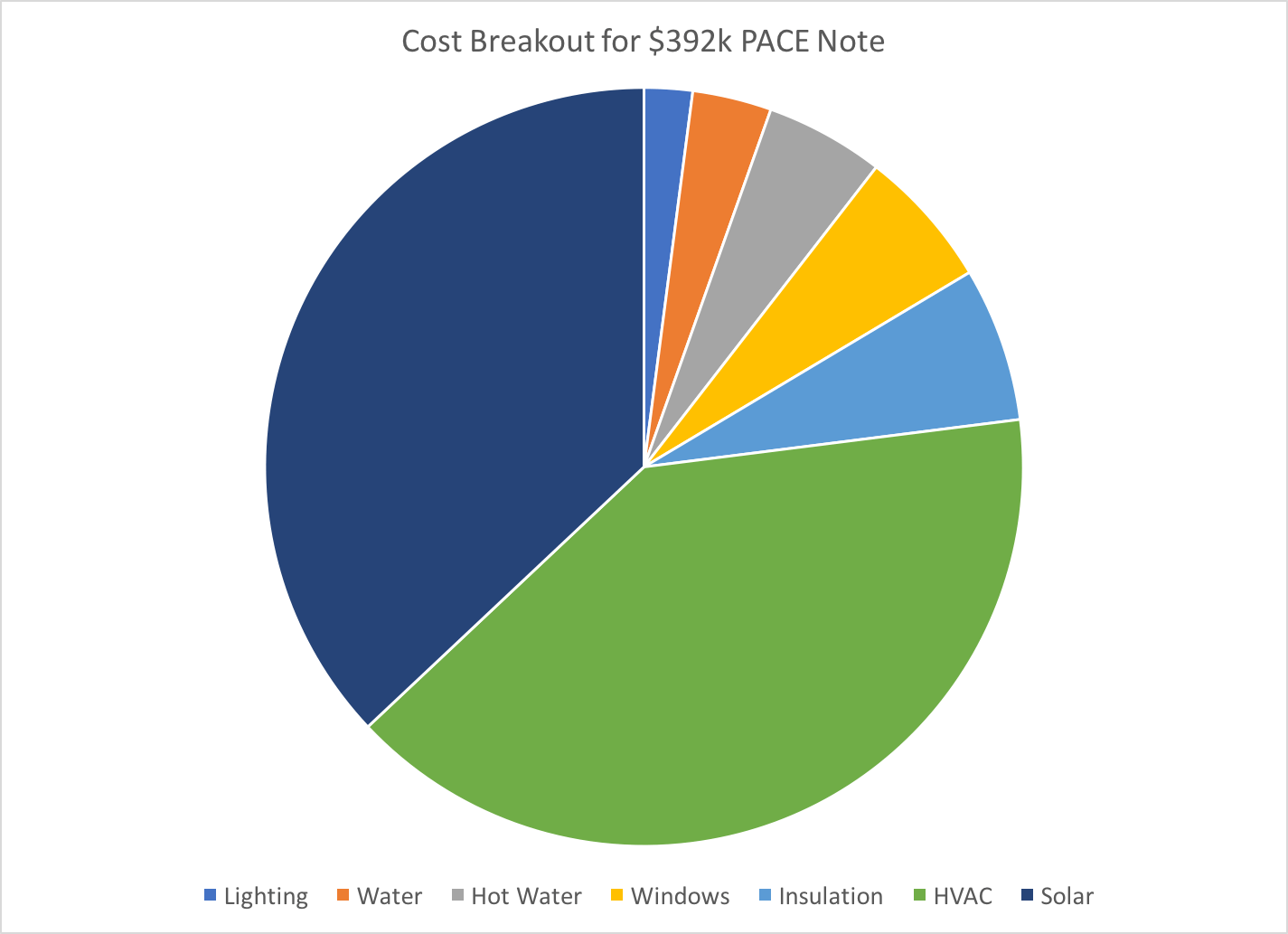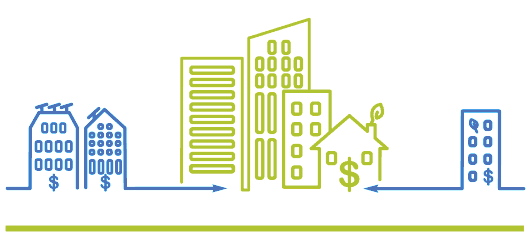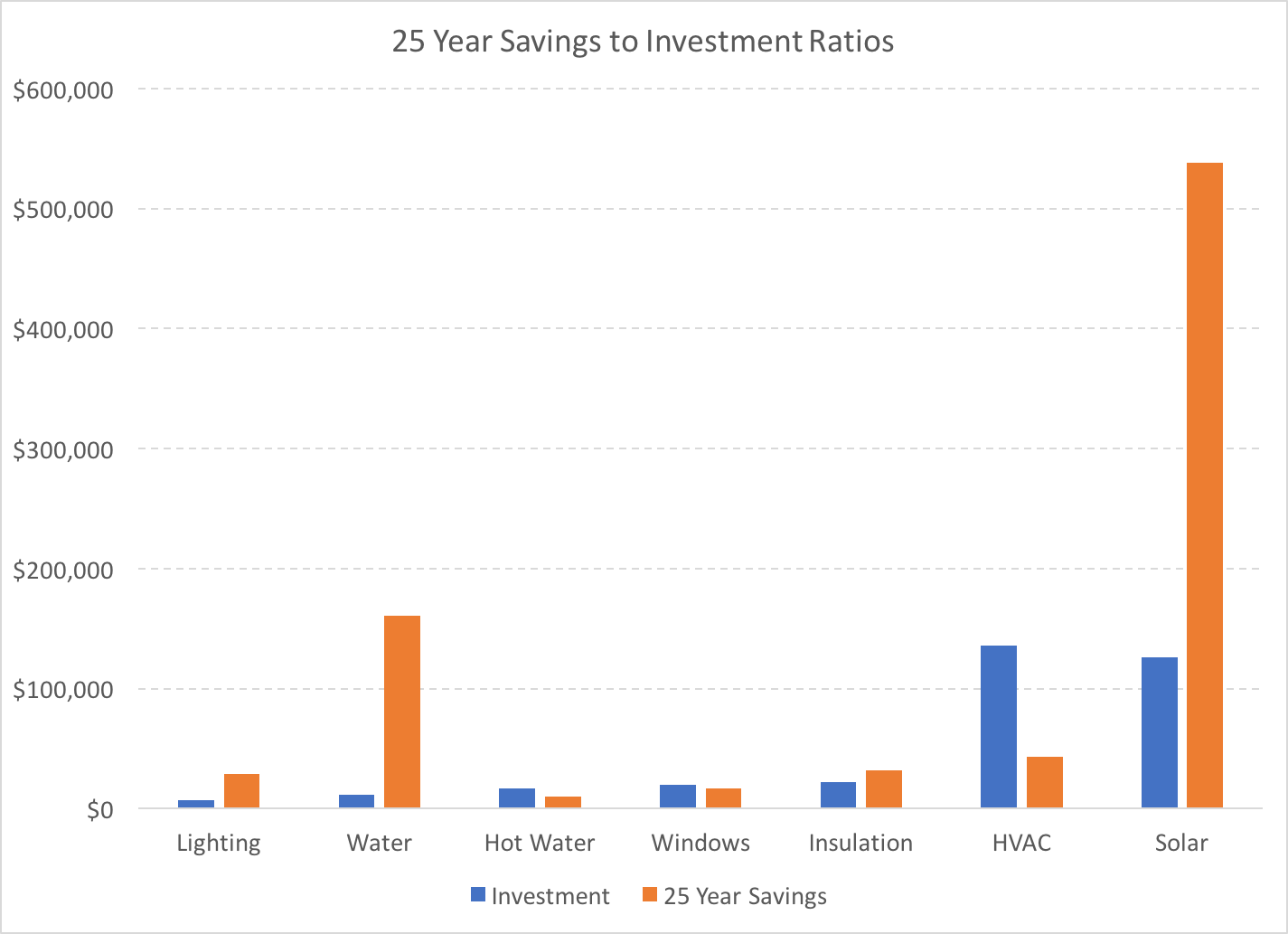As a building owner or manager, every dollar saved is not only a dollar earned, it’s a dollar earned each year for the next 10 to 30 years. We recently completed a detailed energy model of a building in Southeast DC that is applying for a PACE loan (Property Assessed Clean Energy).
PACE is currently available throughout DC, many counties in New York, Virginia and Maryland, and throughout the Commonwealth of New Jersey, Connecticut and Massachusetts. It’s available in other places as well, but we only serve these jurisdictions. A PACE note differs from a traditional loan in that it is lien on the property paid through the property tax system and is off a company’s balance sheet. It can only be used exclusively to pay for sustainability measures, including solar PV and energy efficient appliances. These loans are usually used to upgrade existing equipment, however this project is a new construction.
To qualify for a PACE loan, the applicant must prove that the upgrades will yield cash flow that exceeds the interest and principal of the PACE note. Because this is a new construction, the PACE administrator in DC, Urban Ingenuity, mandates use of ASHRAE 90.1 2007 guidelines as a benchmark to measure savings from. In other words, we compare the new infrastructure with the minimum required efficiencies from 2007.
Results will differ based on the regional climate, cost of utilities, and efficiencies of the upgrades. See the table to the right for a list of key assumptions used in this analysis. Additionally, the costs shown below include installation and engineering for solar PV and HVAC, but exclude for the remaining items.
As you can see by the pie chart on below, the total cost of this project is $392,000. The vast majority of this money will go to pay for sixteen 16 SEER electric heat pumps and a 44kW Solar PV system. The other building elements would be 40-60% more expensive if the building owner were not installing themselves.

The chart below shows savings to investment ratios between each building component. Note that only lighting, water fixtures, insulation and solar PV have a net cash flow positive. Of course, your building still needs hot water, windows, and HVAC. Plus, there are more efficient versions of each of these available in the market. Solar is so high because DC has very strong SRECs (Solar Renewable Energy Credits) which pays the system owner thousands each year. Additionally, the federal government will pay the system owner 30% the value of the system in the form of a tax credit year one. it’s clear that the project would not be viable without a heavily subsidized solar PV system.
The last chart below shows the cumulative cash flows. The term on the PACE loan is 20 years, including a 5% fee for the PACE administrator, cost for Honeydew to develop the Technical Application, and 6.25% APR interest rate. Each year, the building owner will pay around $35,000, total payments just under $698,000. We estimate total savings and SREC revenue to be over $830,000. Note that this model works best if the building owner master meters a multifamily building and includes utilities in rent. They can then advertise the building as being eco-conscious and having free electricity from the solar PV system.

We’ve identified two main motivations for taking a PACE loan. The first is if an entity has bad credit. Because the loan is secured with a predictable positive cash flow and administered through a municipality, credit risk is substantially reduced and with it interest rates. The second motivation is if a developer is in rapid build mode and is approaching their credit limit. PACE will pay for up to 20% of the cost of a new construction and extends their ability to leverage additional funding for new projects. Additionally, building owners may use the solar ITC (Investment Tax Credit), equal to 30% the cost of the PV system, for anything they would like to.
This is a lot to take in! But we at Honeydew can make the process very easy for you. In addition to preparing the PACE Technical Application and modeling the energy costs, we can also propose alternative financing options and recommend high value, low cost contractors and components for your building’s upgrade or new construction. Please reach out through the form below for a free consultation.



